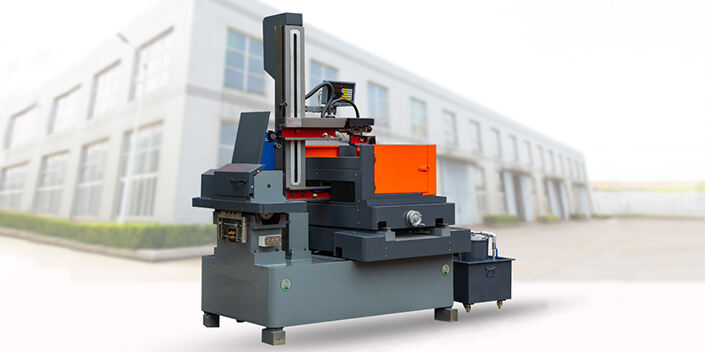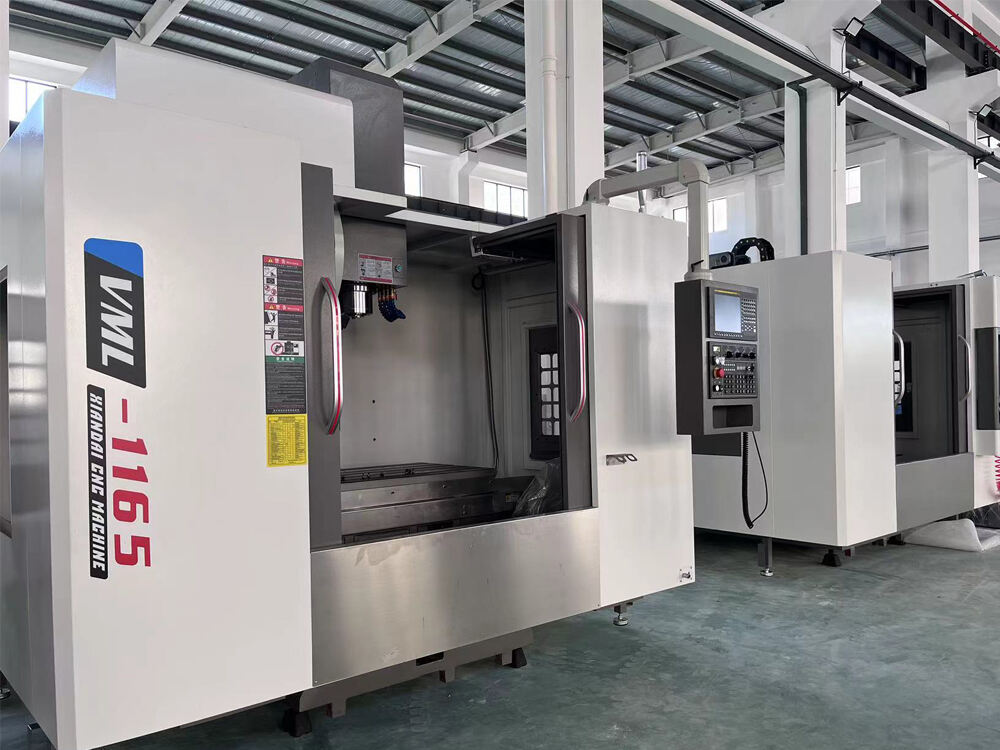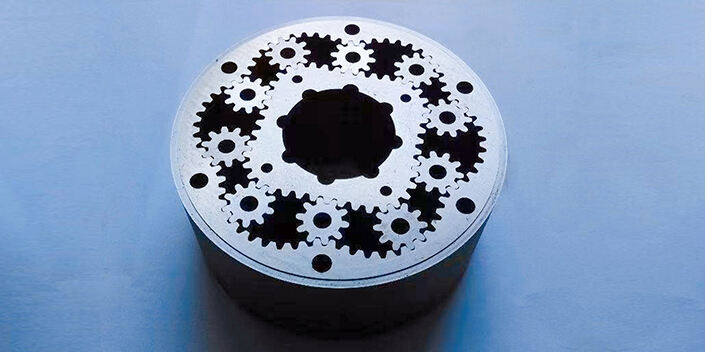Tavasz Gépmodelljeinek Fejlődése a Gyártásban
A Kézi Rendszerektől CNC-irányított Rendszerekig
Amikor a rugógyártás átváltott azokról a régi kézi gépekről CNC-rendszerekre, az tulajdonképpen meghatározó változást jelentett az iparágban. Ezek az új, számítógéppel vezérelt rendszerek automatizálást hoztak, amely csökkentette az emberi tényezőből fakadó hibákat, és biztosította, hogy minden termék majdnem teljesen azonos legyen. Ipari jelentések szerint a gyárak többsége körülbelül 30%-os termelékenységnövekedést ért el a CNC-technológia alkalmazása után, ami egyértelműen beszédes arról, mennyivel hatékonyabbak ezek a rendszerek a hagyományos módszerekhez képest. A Camless Spring Machines nevű vállalatok igazán vezető szerepet játszottak ebben a folyamatban az 1990-es évek vége felé, amikor jelentős összegeket fektettek be ezekbe az új technológiákba még akkor is, amikor mások kétkedve tekintettek rájuk. Az ő korai áttörésük révén új tervezési lehetőségek nyíltak meg, amelyek korábban a régi felszerelésekkel elképzelhetetlenek voltak, és ez teljesen megváltoztatta azt, amit a gyártóüzemek a termelési folyamat során elérni tudtak.
Vasvágó EDM Technológia Integrálása
A vezetékes szikraszerszámolási technológia bevezetése teljesen megváltoztatta a rugók gyártásának módját, sokkal nagyobb pontosságot és gyorsabb eredményeket biztosítva. A szikraszerszámolás működése azon alapul, hogy elektromos szikrákkal vágják az anyagokat, amely lehetővé teszi a gyártók számára, hogy rendkívül összetett alakzatokat készítsenek, amelyeket régebbi technikákkal nehéz lenne megvalósítani. A gyártási idők is jelentősen csökkentek, egyes üzemek azt jelentik, hogy a hagyományos módszerekről való áttérés után a gyártási időbeosztásuk felére csökkent. Az időmegtakarításon túl ez a módszer valójában kevesebb anyagot használ fel összességében. A kevesebb hulladékba kerülő fém alacsonyabb költségeket jelent a vállalatok számára, miközben továbbra is magas minőségű alkatrészeket kapnak. A rendszer különféle rugótervekkel is megbirkózik, biztosítva, hogy minden darab pontosan illeszkedjen a szigorú előírásokhoz. Ez a részletre való odafigyelés megbízhatóbb termékekhez vezet, amelyek hosszú távon is egyenletesen működnek.
A modern gyűrőgép-modellök kulcsfontosságú jellemzői
Pontosságos mérnöki megoldás forgástechnológiai géppel való kompatibilitással
A pontos mérések elvégzése modern rugók készítésekor nagyon fontos, mivel még a kis hibák is komoly problémákat okozhatnak később. A megmunkáló gépek itt szinte elengedhetetlenek, mert lehetővé teszik az előállítók számára a finom beállításokat a vágási műveletek során, így biztosítva, hogy minden rugó pontosan megfeleljen a tervezési előírásoknak. A mérnöki technológiában elért legújabb fejlesztéseknek köszönhetően a gyárak most már rendkívül pontos rugókat tudnak gyártani a korábban elérhetőhöz képest, ami a tételenkénti jobb konzisztenciához vezet. Számos vállalat észrevehető javulásról számolt be a rugógyártáshoz használt kompatibilis megmunkáló gépekre való áttérés után. Néhány mérnök, akivel beszéltünk, említette, hogy az újabb megmunkáló gépek használata valóban jelentős különbséget eredményez a rugók teljesítményében és élettartamában egyaránt a valós alkalmazási esetekben.
Többtengelyes villamossal történő feldarabolási képességek
A többtengelyes huzalos eróziós megmunkálás különleges előnyt jelent az összetett rugóformák készítésekor. A gyártók most már rendkívül részletes terveket készíthetnek anélkül, hogy a szokásos problémák jelentkeznének, amelyeket az alapvető megmunkálási technikákhoz szoktak társítani. Bizonyos rugótípusokat figyelembe véve azok a gyárak, amelyek ezeket a többtengelyes rendszereket használják, lényegesen jobb hatékonysági mutatókat érnek el. A gyártási idő jelentősen csökken, miközben a költségek is mérséklődnek. Egyre több üzem szívja fel magát ehhez a technológiához mostanában. Valós példák mutatják be, hogyan tudják a vállalatok egyszerűsíteni munkafolyamataikat és csökkenteni a hulladéktermelést. Az eredmény egyértelmű: a gyártók gyorsabban tudnak rugókat gyártani, miközben elérhetik azokat a magas pontossági és összetettségi igényeket, amelyeket a vásárlók manapság elvárnak.
Alkalmazkodó összefúró mechanizmusok különféle gyufatípusokhoz
Az adaptív tekercselési technológia nagy szerepet játszik a különféle rugók gyártásában, és rugalmasságot biztosít a gyártók számára, miközben felgyorsítja a termelési folyamatokat. A hagyományos módszerek egyszerűen nem tudnak lépést tartani ezzel az új megközelítéssel, ha a beállítási idő csökkentéséről és az erőforrások hatékonyabb kezeléséről van szó. A termelési sorozatok gyorsabban befejeződnek, és kevesebb fémszemetet kell elhullajtani. Az ipari jelentések folyamatosan kiemelik, mennyire jól kezelik a modern tekercselő rendszerek az egyedi igényeket. A rugógyártók valós időben tudják finomhangolni a paramétereket, hogy pontosan megfeleljenek az automotív ipar, az orvostechnika vagy az ipari berendezések szigorú előírásainak. Ez a fajta rugalmasság ma már rendkívül fontos a piacon, ahol az ügyfelek egyre inkább specializált termékeket várnak, amelyeket gyorsan kell leszállítani. Azok a gyártók, akik befektetnek ezekbe a rugalmas rendszerekbe, jobb pozícióba kerülnek, így kis tételű gyártási sorozatoktól a nagy mennyiségi megrendelésekig is hatékonyan tudnak reagálni, miközben nem szenved a minőség.
Működési előnyök a hajlító gyártóknak
Növekedett termelékenység elektromos áramlási berendezéssel
Az elektromos kisüléses megmunkálás, más néven EDM (EDM) jelentősen növeli a termelékenységet rugók készítésekor, mivel csökkenti az emberi beavatkozás szükségességét. A folyamat automatizált rendszereket használ, amelyek szinte folyamatosan működhetnek minimális felügyelettel, így a gyárak többet tudnak termelni kevesebb idő alatt. Statisztikák szerint a vállalkozások általában körülbelül 30%-os termeléssel való növekedést észlelnek az EDM-re való áttérést követően a hagyományos módszerekhez képest. Miért? Egyszerűen azért, mert az EDM megszünteti azokat a körülményes lépéseket, amelyeket korábban kézzel kellett elvégezni. Ez az automatizálási forma teljesen megváltoztatta a gyártóüzemek által elérhető termelési mennyiséget az iparágban.
Anyaghasznosítás drótvágó folyamatokban
A huzalos erózió megkülönbözteti magát a anyaghatékonyság terén, amely valós hatással van a költségekre és a fenntarthatóságra is. Amikor a gyártók hagyományos vágótechnikák helyett huzalos kisüléses megmunkálásra váltanak át, lényegesen kevesebb anyag megy veszendőbe. Egyes tanulmányok szerint ezek az eljárások bizonyos alkalmazásokban akár 40%-kal is csökkenthetik az anyagveszteséget. Ekkora csökkenés jelentős különbséget jelent a költségvetés szempontjából, miközben környezetbarátabb megoldást is nyújt. A zöld kezdeményezések iparágakban való egyre nagyobb jelentősége miatt számos gyártó már nemcsak költségkímélés, hanem azért is áttér a huzalos eróziós technológiára, mert ez segíti az ügyfelek által elvárt növekvő környezetvédelmi szabványok teljesülését.
Csökkentett leállás-ideje automatizált rendszerekkel
Az automatizálás nagy szerepet játszik a gépek állásidejének csökkentésében a prediktív karbantartási funkciók és folyamatos rendszerellenőrzések révén. Amikor ezek az intelligens rendszerek időben észlelik a problémákat, azokat már meg is tudják javítani, mielőtt bármi ténylegesen meghibásodna, így a termelés zömmel zavartalanul folyik. A különböző ágazatokban működő gyárak közül sok érezhető javulást tapasztalt az automatizálás bevezetése után. Egyes autóipari üzemek azt jelentik, hogy az ilyen technológiák bevezetése óta 30%-kal kevesebb az állásidő, ami természetesen növeli a termelést, és jóval előrejelezhetőbbé teszi a szállítási határidőket. Azok a vállalatok, amelyek befektetnek az automatizálásba, általában viszonylag rövid idő alatt megtérülő eredményt látnak a növekedett termelékenység és az alacsonyabb javítási költségek formájában. Ezek a technológiai fejlesztések mára már nemcsak előnyt jelentenek, hanem egyre inkább szükségszerűek a gyártók számára, ha versenyképesen szeretnének maradni a mai piacon.
Technológiai fejlesztések a törzs termelésében
MI-művelt minőségbiztosítás CNC törzs alakításban
A CNC rugóformázás világában jelentős változások zajlanak az MI és gépi tanulási technológiáknak köszönhetően. Ezek az új eszközök segítenek a termékek konzisztenciájának fenntartásában, mivel automatikusan felismerik és javítják a hibákat összetett matematikai képletek segítségével. Nézzük például a deformációs mintázatokat, amelyek korábban rendkívül sok kézi ellenőrzést igényeltek. Az MI-rendszerek folyamatos részletfigyelése lehetővé teszi a gyártók számára, hogy problémákat észleljenek, mielőtt azok komolyabbá válnának, és így fenntartsák a kritikus tűrési előírásokat. Azokban a műhelyekben, ahol elkezdték alkalmazni ezeket az intelligens rendszereket, a hibás termékek aránya drasztikusan csökkent, ami kevesebb hulladékot és elégedettebb vásárlókat jelent. Az eredmény? A vállalati eredmények is javulnak. A jövőt nézve egyre több gyár kezdi integrálni az MI-t munkafolyamataiba, nem csupán minőségellenőrzésre, hanem az egész termelési láncban. Ami korábban a legmodernebb technikának számított, az mostanra gyorsan a szabványos gyakorlat részévé válik.
Energiahatékony Elektromos Vágás (EDM)
Az eróziós gépek ma már egészen máshogy néznek ki, mint néhány évvel ezelőtt, főként azért, mert a gyártók csökkenteni akarták az energiafogyasztást. A újabb modellek ténylegesen körülbelül 20%-kal kevesebb áramot fogyasztanak, mint a régebbi verziók, ami havonta valódi megtakarítást jelent. Példaként említhető az ABC Manufacturing, amely tavaly váltott át ezekre az energiatakarékos eróziós rendszerekre, és azóta jelentősen csökkent az áramszámlája. Érdekes módon ez nemcsak a pénz megtakarításáról szól. Ezek a változások segítenek a gyáraknak a szénlábadók csökkentésében is. Mivel az iparágakban egyre fontosabbá válnak a zöld kezdeményezések, az vállalatok egyre inkább felismerik, hogy az ilyen fejlett eróziós technológiákba való beruházás egyszerre gazdaságilag és környezetvédelmi szempontból is logikus döntés.
Jövőbeli trendek a törzsgép fejlesztésében
IoT integráció előrejelzéses karbantartásra
Az IoT technológia bevezetése a rugógyártó gépek prediktív karbantartásába napjainkban megváltoztatja a gyárak működését. Amikor a gyártók ezeket a kis IoT érzékelőket felszerelik a berendezéseikre, élő adatfolyamokhoz jutnak, amelyek valójában előre jelezhetik, mikor következhet be meghibásodás. Ez kevesebb termelési leállást és kevesebb veszteséggel járó várakozási időt jelent a javítások miatt. A karbantartó csapatok is jobban tervezhetnek, mivel pontosan tudják, mikor kell alkatrészeket cserélni, nem pedig csak találgatniuk kell. A legtöbb gyár gyorsan rákap erre a vonatra. Egy nemrégiben a MarketsandMarkets által készített tanulmány szerint az ipari IoT szektor valószínűleg évente körülbelül 13 százalékkal növekszik 2021 és 2026 között. Ez a növekedés érthető, figyelembe véve azt, amit már most is tapasztalunk a gyártósorokon, ahol a tervezatlan leállások évente milliókat költenek el a vállalatoknak.
Hibrid rendszerek EDM és konverziós módszerek kombinációja
A hibrid rendszerek, amelyek az elektromos kisüléses megmunkálást (EDM) hagyományos gyártási módszerekkel kombinálják, átalakítják a sokoldalság és a termékminőség terén a játékszabályokat. Amikor a gyártók az EDM folyamatokat hagyományos megközelítésekkel, mint például esztergálás és marás kombinálják, sokkal jobb eredményeket érnek el összetett alkatrészek esetén. Ezek a rendszerek egyszerűen jobban képesek kezelni a különböző gyártási igényeket, mintha csak egyetlen módszert alkalmaznának. Azok a vállalatok, amelyek áttértek erre a megoldásra, sokszor említik, hogy mennyivel rugalmasabbá vált a működésük. Egy példa: egy cég, amely autóalkatrészek gyártásához elkezdte a huzalos EDM technológiát használni a szokásos megmunkálási módszerekkel együtt, valós javulásokat ért el nemcsak a gyártott alkatrészek minőségében, hanem jelentősen csökkentette az anyagveszteséget is. Előretekintve ez a technológiák ötvöződése egy olyan jövő felé vezet, ahol a gyártás nem csupán arról szól, hogy egy feladathoz egy eszközt válasszunk, hanem arról, hogy többféle megközelítést integráljunk a maximális előny érdekében a különféle gyártási kihívások kezelésében.





